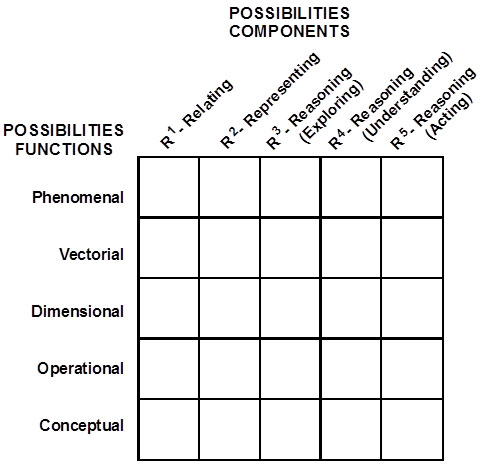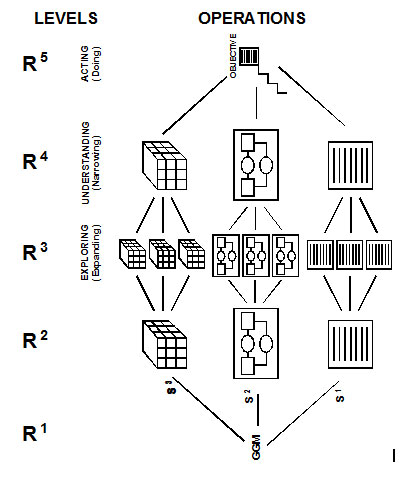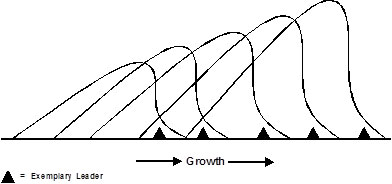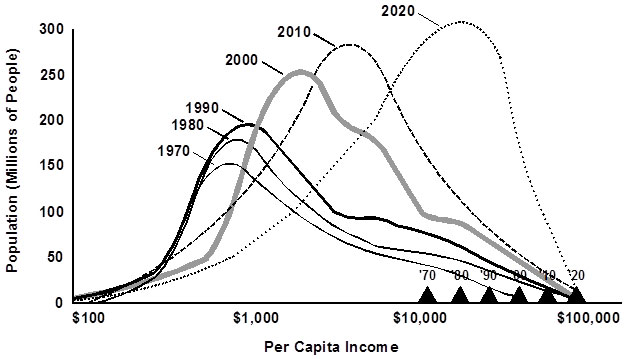Culminating Generatively*
As the universes of possibilities expand, they generate “Possibilities Spaces” or “Phenomenal Spaces,” opportunities in which Generativity Science may work its magic. Generativity Science is an outgrowth of Possibilities Science. Dedicated exclusively to The Freedom Function, Generativity Science emphasizes generative human processing of information-modeling components: conceptual, operational, dimensional, vectorial, phenomenal. In other words, Generativity Science emphasizes expanding the levels of information-modeling before narrowing the objectives by scaling the values and requirements generated by the decision-makers, human or phenomenal.
It is with the introduction of Generativity Science that the Possibilities Science is culminated. To be sure, The Possibilities Scientist, himself released by Generativity, seeks to actualize the Freedom Function for all phenomena. Generativity empowers both scientist and phenomena to generate life on their own terms. Generativity is not simply “thinking outside of the box.” Generativity is creating the “cubes” and “spheres” and “social schematics” to fill the “Possibilities Spaces.” Generativity is creating our own “universes—internal and external” – in which we and the phenomena we are addressing live.
| SCIENCES | FUNCTIONS | PROCESSING | MEASUREMENT |
|---|---|---|---|
| GENERATIVITY |
|
S–P–R GenerativeProcessing Systems | Paradigmetric |
_________________________
*Carkhuff, R. R. The Human Science. Amherst, MA: HRD Press, 2012.
We may illustrate by operationalizing just one of these processing systems with all of the information functions (see Figure 1).

Figure 1. S–P–R Generating with Phenomenal Information
As may be noted, S–P–R generativity processes possibilities information functions as follows:
- R1 – Relating to Data;
- R2 – Representing Information;
- R3 – Reasoning by Exploring Information;
- R4 – Reasoning by Understanding Information;
- R5 – Reasoning by Acting Upon Information.
The levels of elevated processing generate levels of elevated levels of information.
One Generativity System, “The Human Generative Processing System” is illustrated below (see Figure 2). It illustrates “thinking beyond the high-beams.” It is as if we were driving along as we use our brainpower in most of our lives—using our low-beams. Once in a while at night, we switch to high-beams and see things that we would never have otherwise seen. This enables us not only to avoid accidents with the probabilistic obstacles lying ahead of us, but also to get better perspectives on our possibilistic targets or goals.

Figure 2. Generative Processing Systems
We may take a simple overview of the structure and functions of Generativity Operations. As may be seen, the phenomena is a simple one. It begins with a simple image of information input or knowledge or data:
It ends with a concrete image of information output, or an operational action plan:

Generativity goes through five simple processing operations to transform the information input into action output:
- R1 – Relating to images of information
- R2 – Representing operational images
- R3 – Reasoning by expanding images
- R4 – Reasoning by narrowing images
- R5 – Reasoning by acting upon images
That’s it! Five simple steps. They meet the criteria of science. They’re operational and therefore do-able. They’re replicable and therefore repeatable. They’re measurable and therefore add to our storehouse of scientific knowledge. Moreover, they’re elegant and therefore highly leveraged: they require a minimum amount of explanation to account for a maximum amount of effect.
When we flick on our “thinking beams,” we see beyond the high-beams. This empowers us to see not only see things that lie before us – probabilities. It also empowers us to see things that might be – in other words, possibilities. This empowers us to view the possibilities in our lives. Even in the face of failure, there are 360 global degrees of success experiences “looming” ahead.
We may view the generative movement of the curve in Figure 3. Each curve eclipses the performance of the previous curve as low performers are transformed into high performers by Relating, Representing, and Reasoning (see Table 1).
Table 1. The Culminating Movement of Changeability
| Levels | Operations | ||||||||
|---|---|---|---|---|---|---|---|---|---|
| 5 | Reasoning by Acting | 4 | Reasoning by Understanding | 3 | Reasoning by Exploring | 2 | Representing | 1 | Relating |

Figure 3. Exemplary Leadership and Continuous Growth
As was noted earlier in Generativity Science, the continuously elevating curves “follow the leaders” whether internal or external. For example, Figure 4 illustrates the “Real-World” movement of Economic Growth as a function of American Free Enterprise Leadership over the past five decades.

Exemplary Leader
Figure 4. Exemplary U.S. Leadership and World Per Capita Growth
(by Decades)
In conclusion, the culminating benefit of Generativity Science is that individuals, organizations, communities, cultures, and nations may continuously define and redefine their own destinies. Built upon “The Theory of Relativity,” “The Science of Generativity” culminates “The Science of Change.”
Together, the sciences comprise “The Science of Change.” They constitute all of the sciences that we can draw upon to accomplish any human missions that we seek:
- The Probabilities Science provides the distribution of predictable responses with projected costs and benefits.
- The Possibilities Science expands the alternative responses with leveraged costs and elevated benefits.
- The Generativity Science generates the new responses with potentially diminishing costs and accelerating benefits.
| THE SCIENCE OF CHANGE | |||
|---|---|---|---|
| SCIENCES | FUNCTIONS | PROCESSING | MEASUREMENT |
| GENERATIVITY |
|
S–P–R | Paradigmetric |
| POSSIBILITIES |
|
S–O–R | Non-Parametric |
| PROBABILITIES |
|
S–R | Parametric |
“The Science of Change” empowers us to generate solutions to any problems in any human endeavor. Together, they have provided us with a “roadmap” that is developmental and cumulative:
- We initiate probabilistically.
- We transform possibilistically.
- We culminate generatively.
“The Science of Change” has evolved intentionally in the 21st century. It empowers us with the capacity to generate our own solutions to our own human problems.
